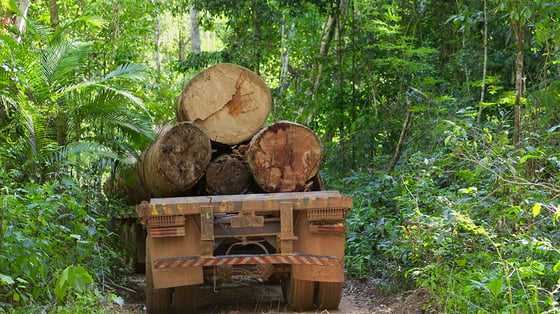Back to articles
Saving the forests with wireless tech

Exciting innovations in environmental conservation-related technology comes to rescue for some of the deforesting, equivalent of 27 soccer pitches every minute, going on in the world.
Forests are essential to global biodiversity. They provide food and habitats for wildlife and indigenous populations and help reduce the impact of climate change. But across the world, forests are at risk of decimation by combining human-driven and natural threats.
Innovative wireless conservation technologies are emerging to combat this concerning trend and encourage greater action against deforestation.
The threat to the world's forests
Increasing global demands for food, materials, and energy cause widespread deforestation and forest degradation. As the number of trees on our planet dwindles, potentially irreversible harm is done to terrestrial biodiversity. How precarious is this reality? In a landmark report, the Intergovernmental Science-Policy Platform on Biodiversity and Ecosystem Services (IPBES) published these figures: Approximately 2.9 million km2 of native forest cover was lost from 1990 to 2015 due to clearing and wood harvesting. Intact forests suffered a seven percent reduction from 2000 to 2013 in developed and developing countries.
Today, things are not getting any better; the World Wildlife Fund (WWF) claims, on average, the world loses 75,700 km2 of forests annually — that's the equivalent of 27 soccer pitches every minute.
Protected land zones represent a vital weapon in the global fight against deforestation. However, successfully enforcing borders, regulations, and restrictions is much easier said than done. Local authorities and conservationists everywhere need more support to identify and restrict human-driven threats to forests. Typically, illegal logging activity and natural events such as wildfires might otherwise go unchecked. Ultimately, meaningful change relies on closely monitoring the activities occurring within a tropical rainforest's designated protected areas.
Wireless to the rescue
Protected status alone cannot save forests across the globe. Thankfully, exciting innovations in environmental conservation-related technology have joined the battle. Utilizing short- and long-range wireless networks, sensor-based devices, like remote monitoring systems connected to Cloud platforms and smartphone apps, are at authorities' hands. Thus, they can constantly listen to all the sounds made in a forest, even if they're kilometers or continents away.
Code of Conscience is a leading initiative supporting efforts to limit illegal deforestation. Launched in September 2019, the initiative aims to track the type of heavy-duty vehicles often used to rip through the forest in both legal and banned logging operations.
Code of Conscience's solution autonomously restricts crews from entering protected zones (as determined by the UN World Database on Protected Areas). The open-source software uses publicly available mapping data with existing GPS tracking technology installed in construction vehicles. The GPS-based "geofence" capabilities interlock with the forest-clearing machinery's fuel pumps, enabling automatic shutdown if the equipment moves into a restricted area.
Integrated cellular connectivity enables notifications and audits of the machinery's position during regular operation and provides a method for over-the-air map data updates. A small, low-cost chip has also been developed to equip older, non-GPS vehicle models with the same capability.
Listening out for deforestation
Code of Conscience has been piloted in the Amazon. Using Nordic Semiconductor's Nordic Thingy:91 multi-sensor cellular IoT prototyping platform, they demonstrate forestry and agricultural vehicles tracking on land and water. The Nordic Thingy:91 offers cellular connectivity 'out-of-the-box.' OEM partners can easily integrate the technology into their machinery for future applications and remote installations.
Another solution can highlight the dangers of deforestation to local communities by detecting loud sounds in forests. The unique device was developed by the young winner of the not-for-profit Micro:bit Educational Foundation's "do your:bit" BBC micro:bit challenge (North America), inspired by the UN Global Goals initiative.
The system includes a Raspberry Pi computer with a connected camera and a microphone that communicates with the Micro:bit (a Nordic SoC-based pocket computer). It wirelessly relays an audio signal then automatically takes a photo and posts it to a public Twitter account. A local park ranger can then review the picture to determine the noise source and respond accordingly — whether it's the crack of lighting or something more sinister, for example, the buzz of a chainsaw.
Light at the end of the canopy
Could solutions providing remote access to actionable information and real-time alerts help individuals, organizations, and communities in their quest to save the forests and, in turn, the planet? With support from robust wireless networks, and if the world is willing to get on board, there certainly appears to be light at the end of the canopy.


